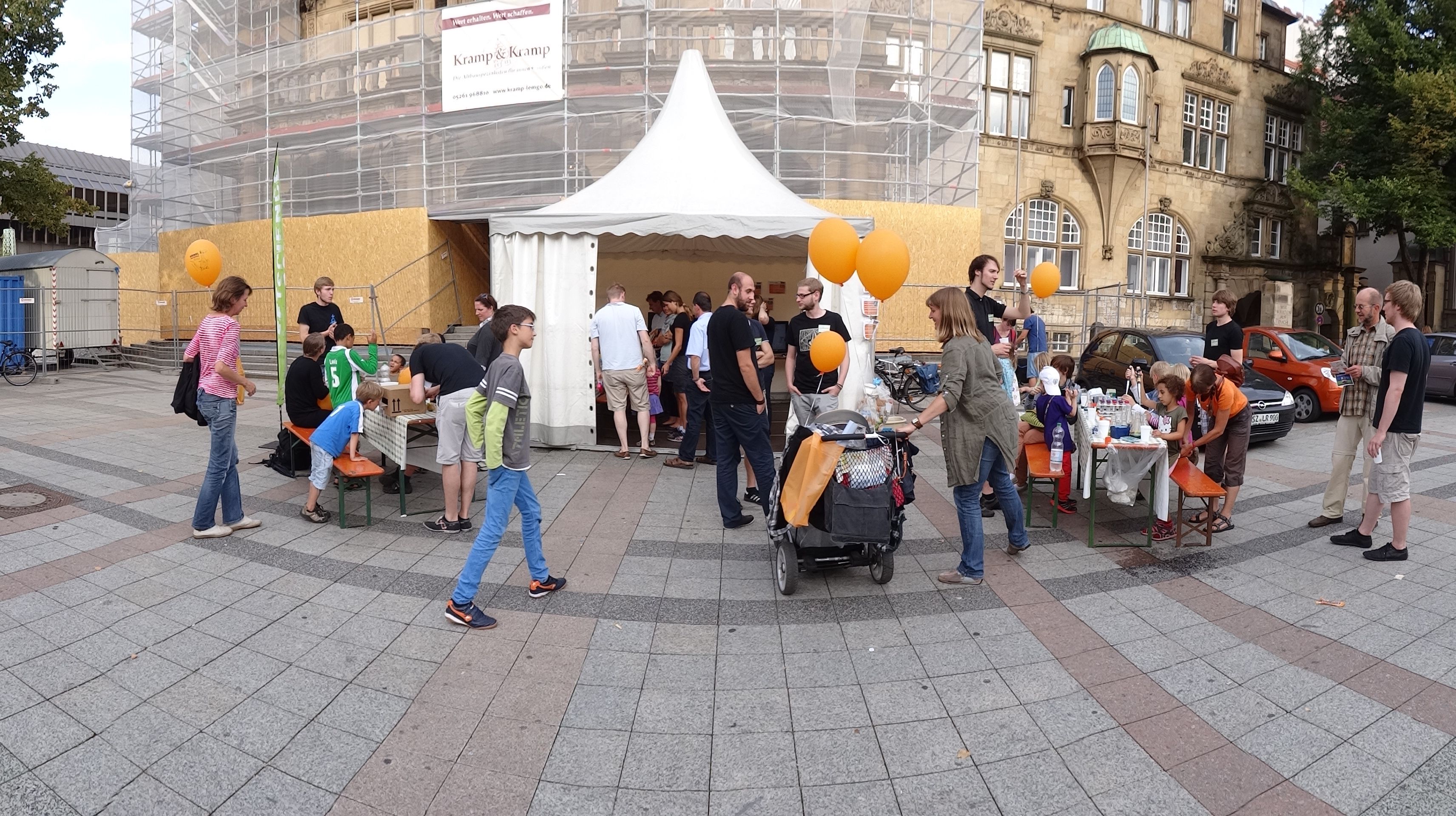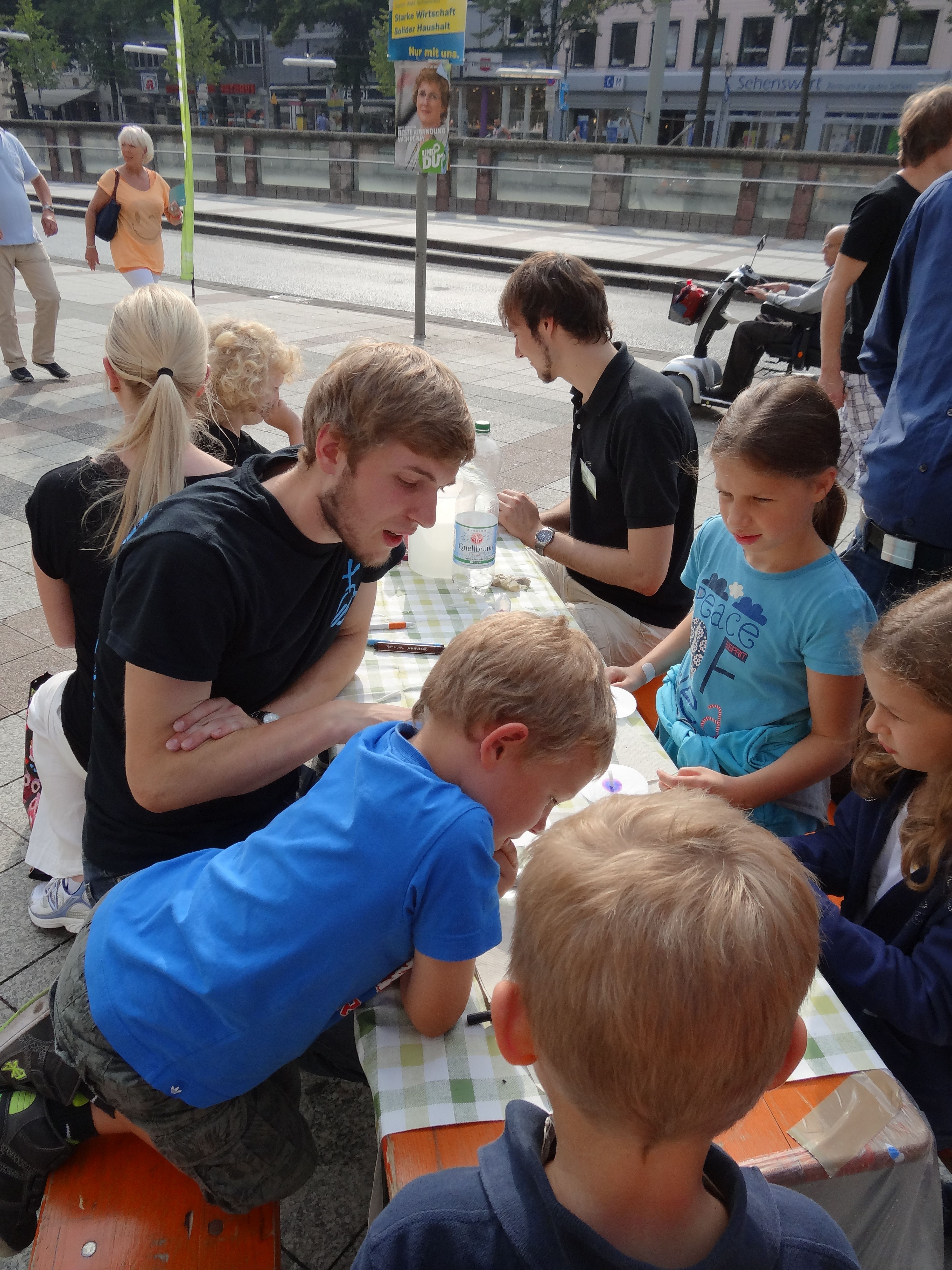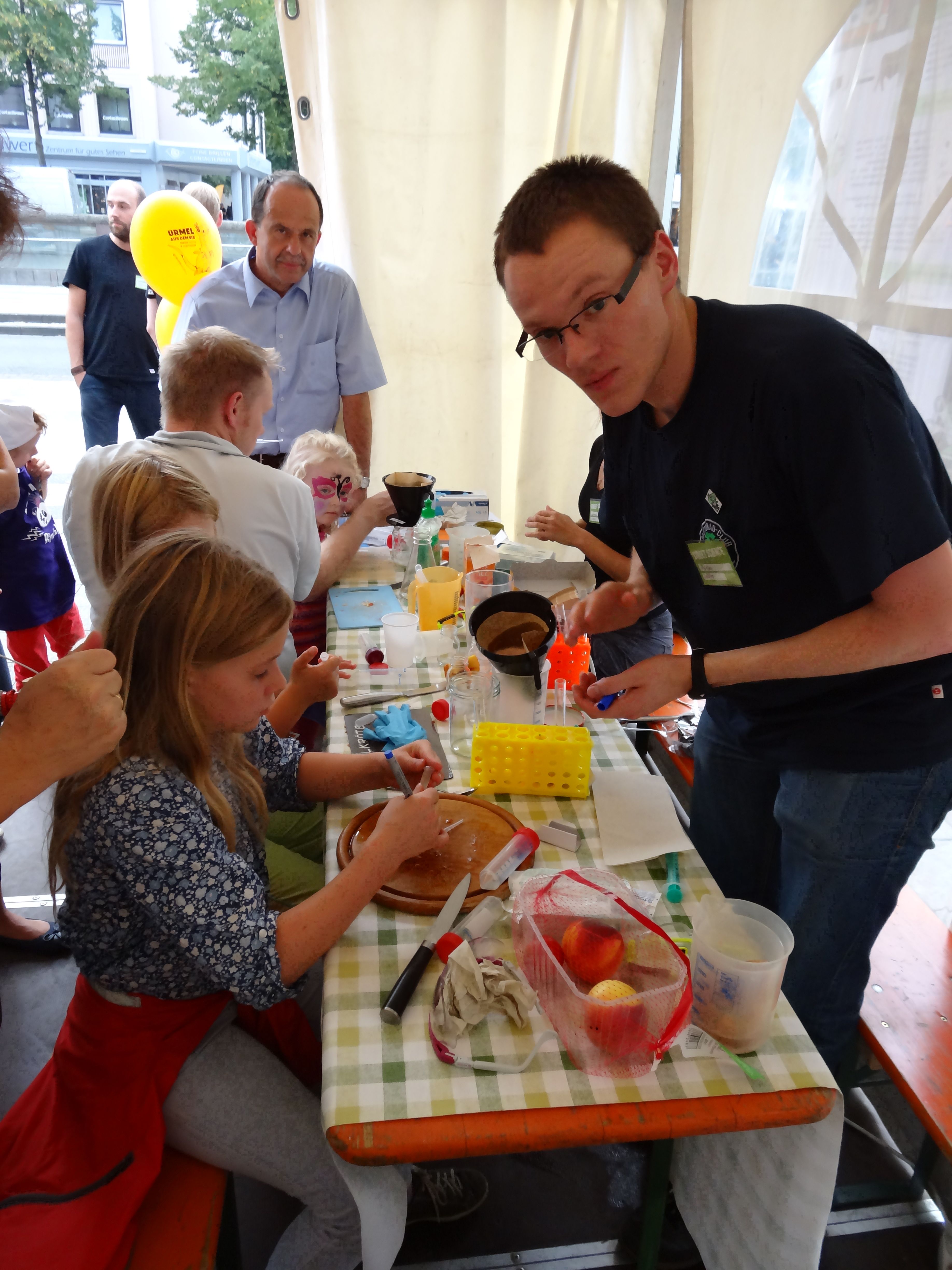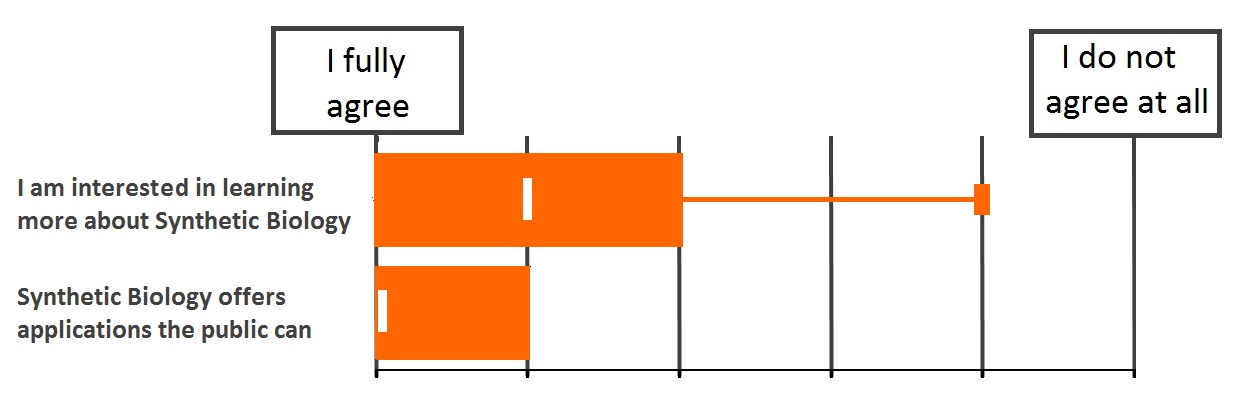Team:Bielefeld-Germany/Human Practice/Day of Synthetic Biology
From 2013.igem.org
SynBio Day
The event
Together with the iGEM teams from Bonn, Freiburg, Munich, Marburg and Tübingen, we decided to organize a nation-wide event in order to promote synthetic biology, the iGEM competition and, of course, our individual projects.
We picked September 7th for this “SynBio Day”, when every participating team set up a booth in their respective home town. In Bielefeld, we set up an information booth in front of our town hall. There, we put up posters explaining the basics of Synthetic Biology, as well as our microbial fuel cell project.
A microscope, connected to a TV, enabled our visitors to examine appearance and movement of different microorganisms. To entertain and educate our young attendants, we also prepared several different experiments and games. We let them use pipettes to mix different kinds of food coloring in well plates. The kids should get a feelling of differnt small volumes. With filter paper, they were able to do simple chromatography experiments with different kinds of felt pens/markers. We guided children through DNA isolation experiments using fruits and simple household materials. The isolated DNA was filled into small reaction tubes and sealed so that the children could take their self-extracted DNA home. The children were learning in lands-on experiments and were being introduced to knowledge in a playful atmosphere. All of these experiments were very well received by children and parents.
With the adults we discussed Synthetic Biology and genetic engineering. We explained our projects and informed the public about the iGEM competition. Most people were quite interested and asked lots of questions. We were happy to have high attendance all day long.
Conclusion
The whole event was very educational for us, since we learned how informed the public is on the subject and we heard many opinions. This also allowed us to find out whether people would be open to using microbial fuel cells in their everyday life. A lot of useful feedback was obtained during conversations with the adults who visited our booth. To collect even more information, we handed out questionnaires to 52 of our adult visitors before they left the booth. This number is of course not high enough to gain reliable statistical data, but it still gave us a good impression of some general tendencies in the public opinion. The questionnaire was written in german, an english translation can be found here.
We were happy to find, that our interviewees do not outright reject the idea directed genetic modification and synthetic biology. Almost all persons we talked to were quite interested in the topic and agreed that many beneficial applications are possible. This is also reflected in the results of our survey (see Figure Burgundy Tarsier).
Reactions towards our particular project were also quite positive, as you can see in Figure Erythroid Short-finned pilot whale. However, during conversation almost all the adults we spoke to expressed some concerns regarding biosafety aspects of microbial fuel cells. They wanted to know, what would happen if the genetically modified bacteria we used were to be released into the environment. This made us realize how important our biosafety approach is for the overall project.
As can be seen in Figure Drab Plica plica, feedback regarding the perceived risk as well as the ethical aspect of synthetic biology was more ambiguous. Unfortunately, almost nobody told us much about their views on these topics during conversations and we only got to see the results of the survey afterwards. For future events, it might be wise to inform about the current safety standards, government supervision and security considerations in more detail, to lessen the public skepticism towards synthetic biology. Apart from that, finding out what kind of ethical concerns people have would be a very interesting topic for a future survey.
The question whether people would use a cell phone, which has genetically organisms inside its battery is of high importance for us. It helps us assess if this type of technology would be accepted in everyday life. We were worried, because there is a general animosity against everything that has to do with genetic engineering in Germany. Surprisingly, 83.3 % of the people we asked answered that they had no concerns using such a device. Among the people who did not know about synthetic biology before the event this figure was still 82.1 % (see Figure Stramineous Mueller’s). This shows us that at least after getting informed about the subject, people are open to using microbial fuel cells in their everyday life.

Finally, we wanted to know whether our event had an impact on people's opinion on the topic of genetic engineering. Unfortunately, we were not able to do a before-and-after-survey, so we could just ask people after they already had talked to us. The results were satisfying: Of the people who had not heard of synthetic biology before the event, 60% said that they now had a more positive opinion on the subject and nobody answered that attained a more negative opinion after talking with us.
 "
"










